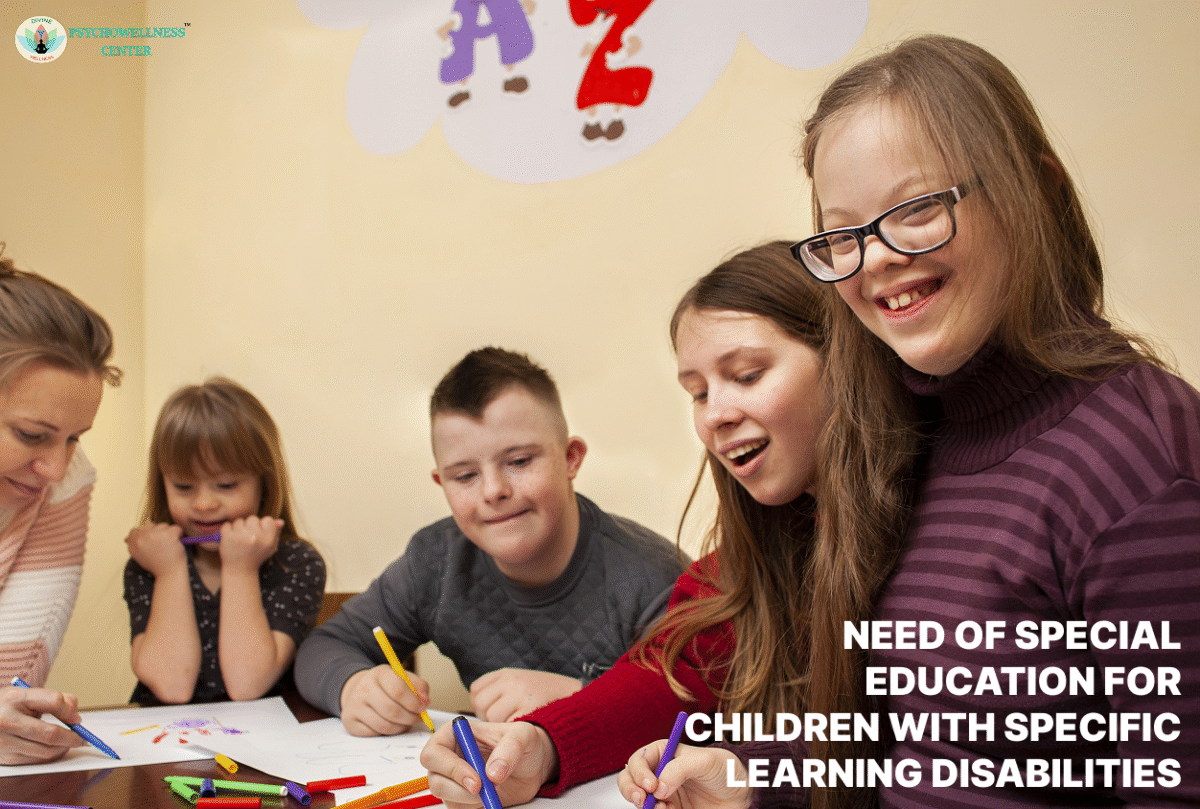Specific Learning Disabilities (SLDs) are neurological disorders that affect a child’s ability to acquire, process, and express information. These difficulties are not a reflection of a child’s intelligence or motivation but are related to how their brain processes different types of information. Common types of SLDs include dyslexia (reading difficulties), dyscalculia (math difficulties), and dysgraphia (writing issues). Despite being often misunderstood, SLDs are among the most prevalent types of disabilities seen in educational settings.
Special education is not just an option—it is a necessity for children with SLDs. It provides tailored instruction, accommodations, and support systems that allow these students to thrive academically, emotionally, and socially. Let us explore the critical need for special education for students with specific learning disabilities and how it contributes to their holistic development.
What are Specific Learning Disabilities?
According to the Individuals with Disabilities Education Act (IDEA), specific learning disabilities are defined as impairments in one or more of the fundamental psychological processes involved in comprehending or using written or spoken language. These may manifest in difficulties with:
- Listening
- Thinking
- Speaking
- Reading
- Writing
- Spelling
- Performing mathematical calculations
SLDs are not caused by physical, intellectual, emotional, or environmental factors but often co-exist with other conditions such as Autism, ADHD, anxiety, or emotional disturbances.
The Challenges Faced by Children with SLDs
Without specialised support, children with SLDs often face:
- Academic Failure: Difficulty keeping up with peers can lead to poor grades and repeated failures.
- Low Self-Esteem: Struggling learners often feel inadequate, especially when compared to classmates.
- Behavioural Issues: Frustration due to constant academic struggle may lead to acting out or withdrawal.
- Social Isolation: Children with SLDs may find it hard to interact socially, especially if their communication skills are affected.
- Dropout Risks: Unidentified and unsupported learning disabilities significantly increase the risk of school dropouts.
Why is Special Education Essential for Children with SLDs?
1. Individualised Education Plans (IEPs)
Special education services begin with a personalised roadmap. IEPs are developed based on a child’s unique strengths and weaknesses. They define clear goals, accommodations, and teaching strategies tailored to their needs.
2. Multisensory and Evidence-Based Teaching Techniques
Special education teachers use multisensory techniques (involving visual, auditory, and kinesthetic-tactile pathways), which are especially helpful for students with dyslexia and other SLDs. These methods help reinforce learning through multiple modalities.
3. Accommodations and Modifications
Children with SLDs benefit from adjustments such as extra time on tests, audiobooks, simplified instructions, or the use of assistive technology. These modifications create equal opportunities without changing the course material.
4. Early Intervention and Progress Monitoring
Special education allows for early detection and intervention, which is critical. The better the results, the earlier the support starts. Regular monitoring also helps track progress and revise strategies as needed.
5. Social and Emotional Support
Beyond academics, special education addresses emotional well-being. Children can gain resilience, learn how to handle irritation, and gain self-confidence through group activities, therapy, and life skills training.
6. Teacher Training and Awareness
Special education ensures that educators are trained to recognise signs of SLDs and implement strategies accordingly. In inclusive classrooms, co-teaching models allow for collaboration between general and special educators.
Inclusive Education and SLDs
Both the Right to Education (RTE) Act and the Rights of Persons with Disabilities (RPwD) Act in India recognise SLDs and mandate inclusive education. However, inclusion is meaningful only when special education services are embedded within mainstream education.
Schools must create inclusive environments that:
- Use Universal Design for Learning (UDL) principles
- Reduce stigma through awareness programs
- Provide resource rooms and special educators
- Engage parents and caregivers in the learning process
Role of Parents and Community
The success of any special education program also depends on active involvement from parents and the community. Parents must be educated about SLDs, trained in supporting homework or reading practices at home, and involved in IEP meetings. Community-based rehabilitation and inclusive social activities further promote acceptance and participation.
Conclusion
Children with Specific Learning Disabilities have immense potential, they simply learn differently. Special education is a powerful tool that helps unlock this potential by addressing their individual needs in a structured, supportive, and empathetic manner. It’s time we shift from a deficit-based perspective to a strengths-based one, acknowledging that with the right support, children with SLDs can flourish in school and beyond. The need for special education is not about labelling or isolating, it’s about empowering every child to learn, grow, and thrive in their unique way.
For families seeking expert guidance, the Psychowellness Center, located in Dwarka Sector-17 and Janakpuri, offers in-person counselling with some of the best psychologists near me, providing compassionate, evidence-based support for children with learning difficulties, emotional challenges, and behavioural concerns. With a focus on mindfulness, emotional resilience, and individualised care, their team works collaboratively with families and educators. Additionally, TalktoAngel offers secure, confidential online counselling, making it easier for parents and children to access expert psychological help from the comfort of their own homes. Both platforms are committed to fostering a safe, inclusive, and growth-oriented environment where children with SLDs can truly thrive.
This article presents valuable insights from esteemed professionals, Clinical Psychologist Dr. R.K. Suri and Counselling Psychologist Ms. Drishti Rajore, who offer practical techniques and guidance to enhance emotional resilience and promote enduring mental well-being
This blog was posted on 26 August 2025
References
American Psychiatric Association. (2022). Diagnostic and statistical manual of mental disorders (5th ed., text rev.; DSM-5-TR). American Psychiatric Publishing.
National Center for Learning Disabilities. (2020). The state of learning disabilities: Understanding the 1 in 5. https://www.ncld.org/research/state-of-learning-disabilities/
National Joint Committee on Learning Disabilities. (2017). Learning disabilities and young children: Identification and intervention. https://www.ldonline.org
How Special Education Helps Autistic Children | Psychowellness Center
Ms. Drishti Rajore | Special Educator | Psychowellness Center

